AITA for always sending my stepsister to her mom when she wakes me up for comfort during the night?

In the quiet hours of the night, emotions and family roles can blur into a complex tapestry of expectations. One teenager’s dilemma illustrates this all too well: a 16‐year‐old boy finds himself repeatedly woken by his 5‑year‑old stepsister, who comes into his room after nightmares for comfort. Rather than offering solace, he directs her to her mom—insisting that he isn’t a parent and that it feels “gross” to share his bed with her. This routine has sparked multiple arguments at home, leaving him frustrated and questioning whether his boundary is a red flag or simply a healthy refusal to take on an unwanted role.
Yet, as the family debates escalate—with his dad and stepmom urging him to help, and his own feelings of discomfort tied to the complexities of his father’s remarriage—the situation becomes more than just a question of sleep. It raises broader issues about emotional responsibility, the natural roles siblings should play, and the unique challenges faced in blended families.

‘AITA for always sending my stepsister to her mom when she wakes me up for comfort during the night?’
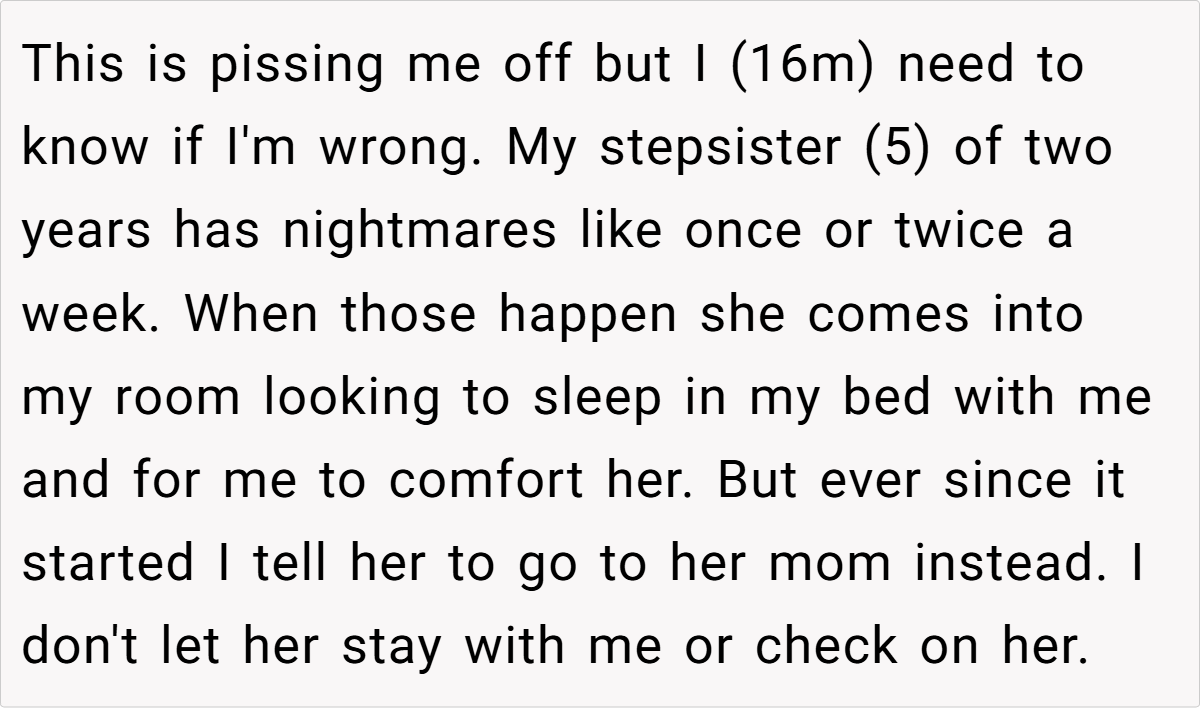

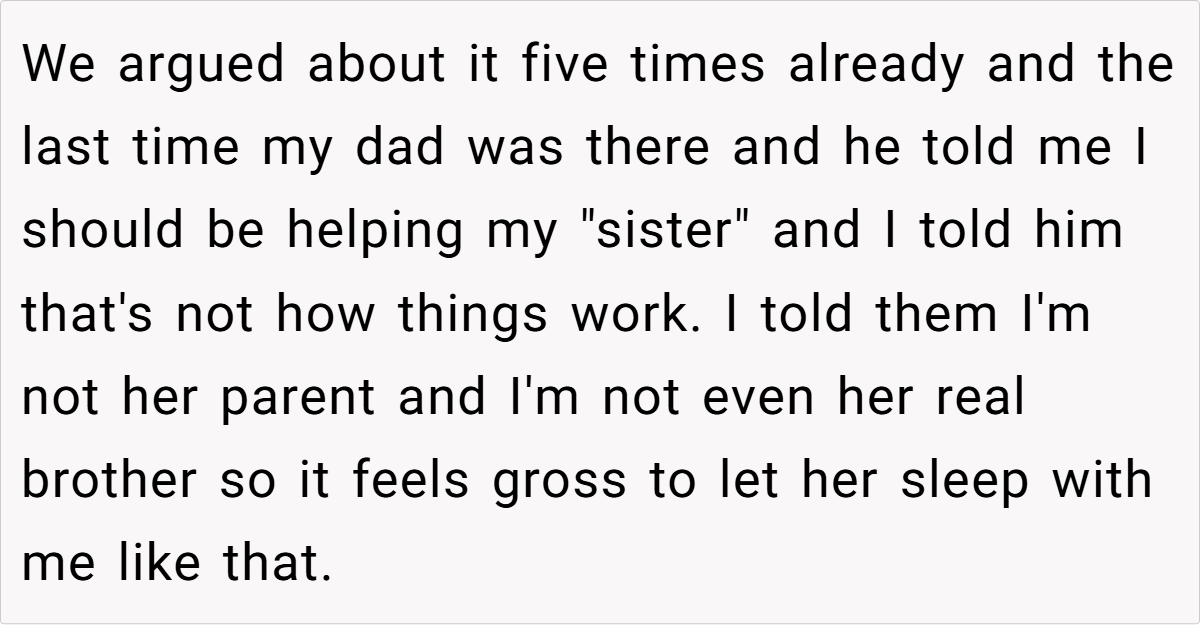


When a child is shaken awake by a nightmare, it is natural for them to seek comfort from a familiar caregiver. Pediatric sleep expert Dr. Jodi Mindell explains, “Consistency in caregiving is crucial for a child’s sense of security. When a child repeatedly looks to a non-primary caregiver for comfort, it may indicate that they are not feeling fully supported at home.” This insight suggests that the stepsister’s nighttime visits reflect her need for reassurance from her designated caregiver—her mom—and not necessarily a demand on her older stepbrother.
At the same time, healthy boundaries are essential for everyone’s well-being. Family therapist experts note that while siblings in blended families may naturally form close bonds, expecting a teenager to assume parental responsibilities can lead to stress and resentment. The 16‑year‑old’s insistence that his stepsister return to her mom, though it might seem unkind, can also be seen as a protective measure for his own sleep and emotional health. It is important that each family member understands their role, ensuring that the primary caregiver is the one who consistently provides comfort during distress.
Moreover, unresolved feelings surrounding parental remarriage and shifting family dynamics can complicate these interactions. The teenager’s reaction may partly stem from his internal conflict about his dad remarrying. Experts suggest that in blended families, open communication and even family counseling can help clarify roles and alleviate hidden resentments. By addressing these underlying issues, families can work together to create a supportive environment that respects both the child’s need for comfort and the teenager’s boundaries.
It is also worth noting that while a sibling might be a source of comfort in certain situations, the emotional labor involved should not be taken lightly. As Dr. Mindell emphasizes, “When an older child is repeatedly placed in a parental role, it may hinder their own development and lead to long-term stress.” Therefore, ensuring that the appropriate adults step in to soothe and support the child is key. Establishing clear boundaries not only helps the teenager preserve his personal space but also reinforces that the responsibility for emotional care should rest with the parent.
In summary, balancing empathy with healthy boundaries is challenging—especially in blended families. When each member understands and respects their role, it fosters a more harmonious household where the child’s needs are met by the right person while allowing older siblings to maintain their well-being. Expert guidance, coupled with family discussions, can pave the way for all members to feel supported and secure.
Take a look at the comments from fellow users:
The Reddit community has weighed in with a mix of empathy and humor. Many users note that while it might feel selfish to refuse a younger sibling’s nighttime visit, it is not unusual for teenagers to draw the line when parental roles are blurred. Some comments jokingly ask, “What would you do if your alarm clock started crying?”—highlighting that even amidst frustration, the situation resonates with others facing similar blended-family challenges.
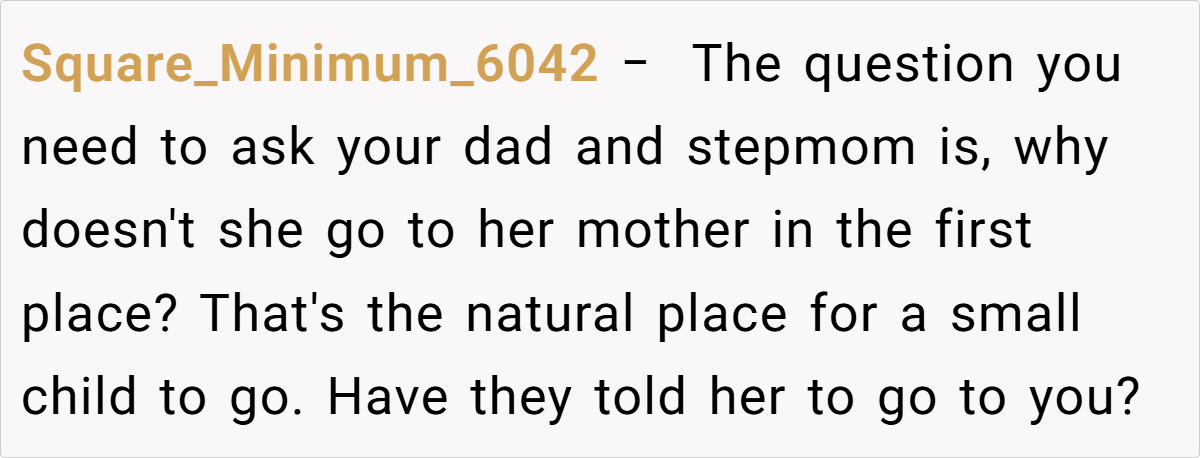
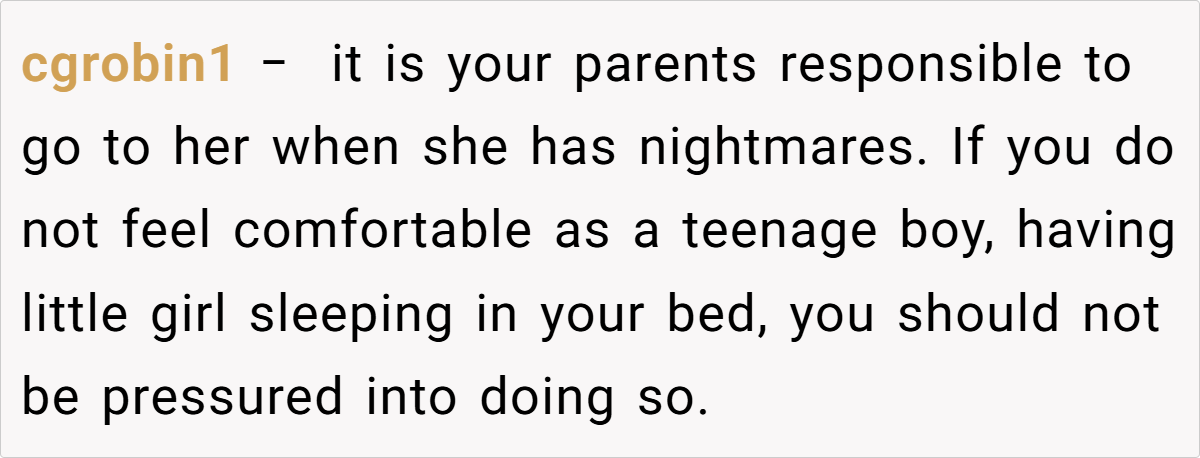


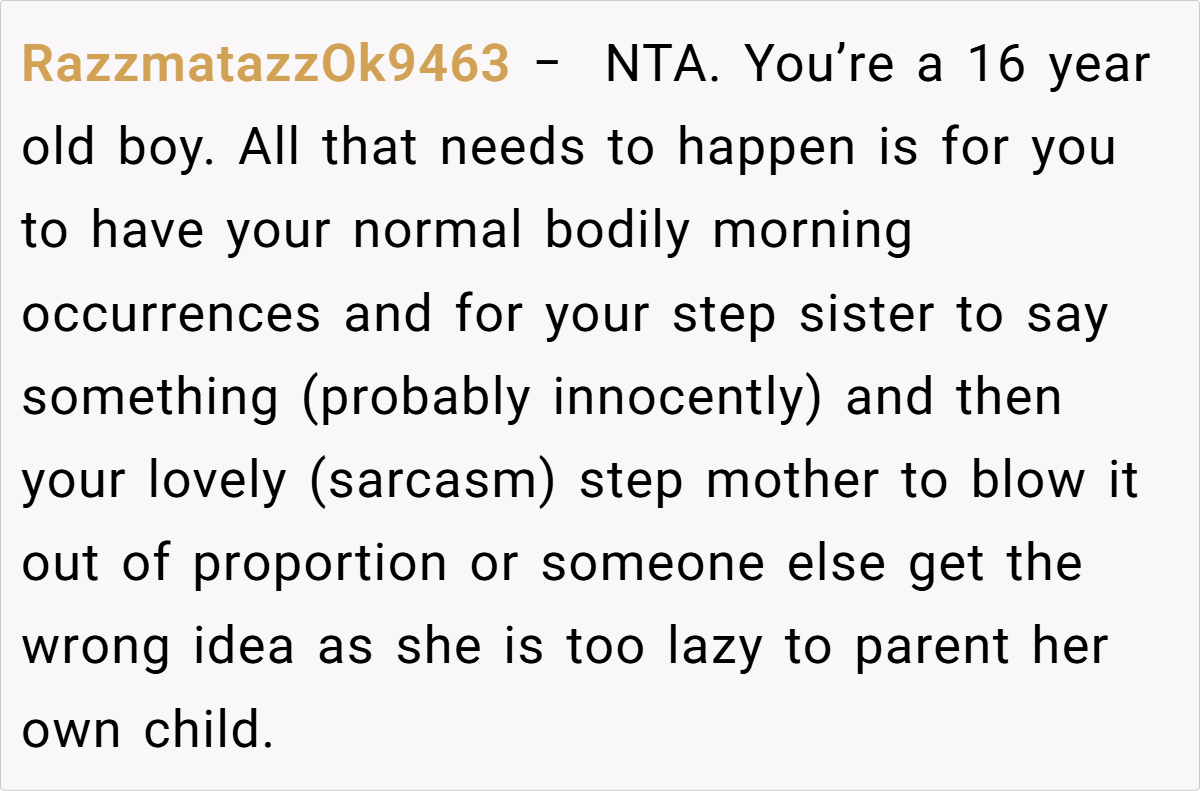


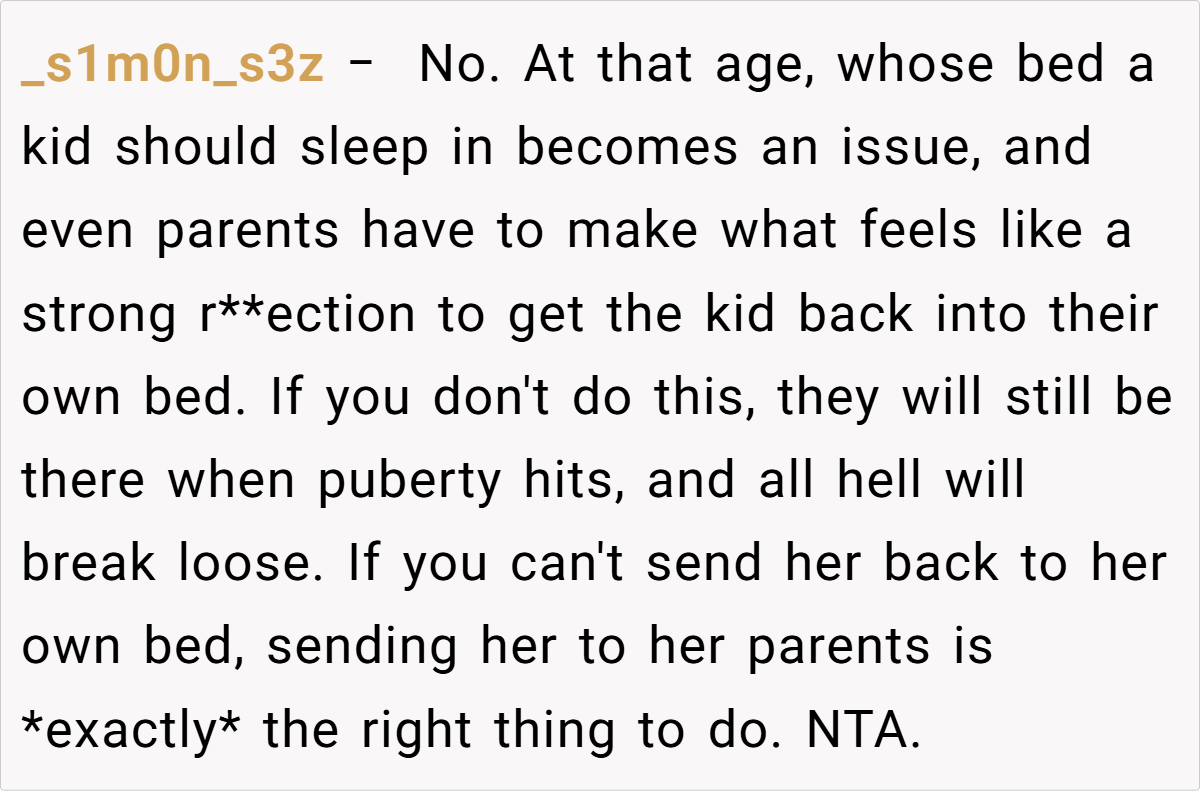




In wrapping up this curious case of nighttime boundaries, it is clear that the teenager’s refusal to comfort his stepsister is rooted in both a desire for personal space and deeper family dynamics. While his stepsister’s need for comfort is entirely natural, it also underscores the importance of consistent caregiving from a primary source. Can setting such boundaries be both healthy and necessary? What steps should families take to ensure that every member feels supported without overburdening others? Share your thoughts and experiences—what would you do in a similar situation?


You seem to be a good older “brother” if she comes to you during the night. Kids instinctively search out people that make them feel good about themselves, which you seem to manage. Not wanting to have her sleep in your bed is fully understandable, so NTA. But maybe take some minutes out of the day and ask her yourself why she is coming to you, the insight may really help you to bond in a certain way, which would also make you feel better about this patchwork family situation